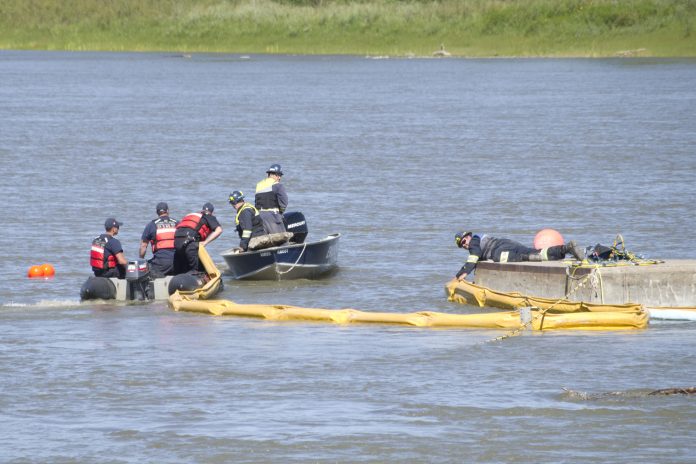
Officials with the Ministry of Environment and Water Security Agency say oil spill cleanup efforts in the North Saskatchewan River are progressing as planned and should be completed sometime in August.
On Thursday, assistant deputy minister Wes Kotyk of the Ministry of Environment told reporters the cleanup work being done by Husky Energy was “effective,” and that there were unlikely to be any future health risks stemming from the 2016 oil spill.
Cleanup crews have surveyed 90 km of shoreline in addition to the 627 km surveyed during the initial cleanup phase, roughly 6.5 km of which have “minor impacts.”
Most of the remaining cleanup involves removing contaminated soil and vegetation from the shoreline or bottom of the river.
Kotyk said they would continue to monitor the North Saskatchewan, but all signs appeared to be good.
“Results are favourable (and) show that there are no risks based on the results of the samples that are coming back.”
Communities affected by the 2016 spill have been collecting drinking water samples on a monthly basis throughout the winter. That’s changed to every second week after the spring thaw. Surface water quality monitoring programs also began this past June.
According to the Water Security Agency (WSA), no petroleum hydrocarbons have been detected in surface or drinking water since February 2017.
Trace amounts have been detected in river bottom sediments.
Overall, WSA environmental and Municipal Management Services Division executive director Sam Ferris the results have been positive.
“Unless there’s another significant event, or a hotspot turns up, or something to that effect with contaminated sediments, I don’t think there’s too much to worry about in terms of drinking water quality for those communities, which is good news.”
Ferris said their primary concern was that the spring ice that would pick up petroleum sediments at the bottom of the river. He added that while there is some indication this is happening, there are also petroleum sediments coming in from upstream of the original spill site.
Water treatment plants appear drawing water from the river appear to be doing their job, he explained, but that doesn’t mean monitoring efforts will stop at the end of August. Any decision on that will likely be made before winter.
“Our monitoring will continue until the end of the open water season,” Ferris said. “After that, we’ll see what the plan brings.”
@kerr_jas • jason.kerr@paherald.sk.ca

